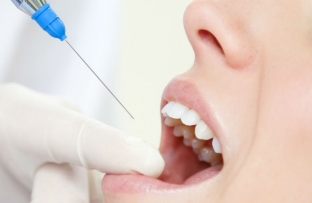Tooth tissues are more permeated with nerve endings than skin. Nerve fibers are able to conduct impulse faster. Therefore, toothache is considered the most painful and unbearable. Before the trip to the dentist, a person begins to remember all the unpleasant sensations associated with pain during tooth treatment, which provokes the release of adrenaline into the blood. Adrenaline, in turn, causes an increase in heart rate, an increase in sugar levels and blood pressure. The feeling of fear of pain can cause a person to experience great anguish before a dental procedure.
Today, in dental clinics or offices, doctors use various methods of anesthetizing the tooth in order to avoid fear and subsequent problems during treatment. Anesthesia for dental treatment can greatly simplify the work of the dentist and improve the patient's condition.
To use anesthesia or not (on a case-by-case basis) – the dentist decides, guided by the neglect of dental problems, individual tolerance of drugs and the presence of contraindications. In this article on Estet-portal.com, we will consider what anesthesia is, methods and consequences of anesthesia of teeth before treatment.
What is Anesthesia for Dentistry
Anesthesia is the process of reducing the sensitivity of the whole body or individual parts. In addition, anesthesia is a complete blocking of consciousness in order to stop the perception by consciousness of information received from the environment, or about your own condition. The anesthetic directs its action not to remove pain, but to block the ability of nerve endings to conduct an impulse. That is, nerve fibers lose the ability to carry information about pain to the brain for a certain time. When the duration of the anesthetic (usually 1-2 hours) & nbsp; ends, the substance is broken down in the body and successfully excreted. After that, the nerve restores its work – the ability to conduct impulses returns.
An undoubted advantage of using anesthesia during treatment or tooth extraction is anesthesia of the area in order to avoid the patient's nervous strain. The disadvantage of anesthesia can be considered the possibility of manifestation of all kinds of allergic reactions to the drug. Anesthesia manipulations are not recommended for patients with cardiovascular diseases, blood clotting disorders, diabetes mellitus.
Basic methods of dental anesthesia
There are several common methods of dental anesthesia, among which dentists most often choose infiltration, conduction or application anesthesia. Less commonly, general or stem anesthesia is used.

Application anesthesia
This method of pain relief is a superficial relief of toothache through gels or aerosols. This method is performed for the purpose of anesthesia to remove stones, remove a loose tooth in order to open a small periodontal abscess.
Infiltration anesthesia
This method of anesthesia is the most common. He deserved universal respect for full-fledged deep anesthesia and liberation of a person from painful experiences. The injection is made with a needle, which is twice as thin as a normal one, and is inserted into the gum. Sensitivity disappears 5 minutes after the administration of the drug. The effect of the anesthetic lasts about an hour – this time is enough to perform all the necessary manipulations for treatment.
Conduction anesthesia
Treatment of molars, gums, or for the simultaneous treatment of a large area, in case the previous methods cannot provide adequate pain relief, dentists use conduction anesthesia. The method is an anesthesia of the trigeminal nerve, that is, the "conductor".
Stem anesthesia
In case of injuries, during the course of a severe pain syndrome, during operations and other complex dental cases, stem anesthesia is used. This method can only be used in a hospital, under the strict guidance of doctors. For anesthesia, a wide blockade of the branches of the trigeminal nerve is performed.
And the last method – this is general anesthesia – used in extreme cases, usually carried out in a hospital. Although already today, dental clinics can use general anesthesia for dental treatment in case of a strong fear of the dental chair or an allergic reaction to anesthetics.
Possible consequences of using anesthesia
After the injection of the drug for anesthesia of the tooth, there is a possibility of an allergic reaction. It is extremely important to notify the doctor about the presence of an allergy to drugs before carrying out the manipulation. The patient himself may not know which drug he is allergic to, so the dentist must definitely conduct a test.
Another consequence after using an anesthetic can be a sharp increase in blood pressure, vasospasm. Such a reaction is possible if the patient has problems with the cardiovascular system. To prevent the occurrence of any consequences after anesthesia, the doctor will take into account all contraindications and ask about the patient's state of health.
Anesthesia in dental treatment is used rather to improve the comfortable flow of dental procedures so that the patient does not experience the whole arsenal of negative emotions associated with pain.






Add a comment